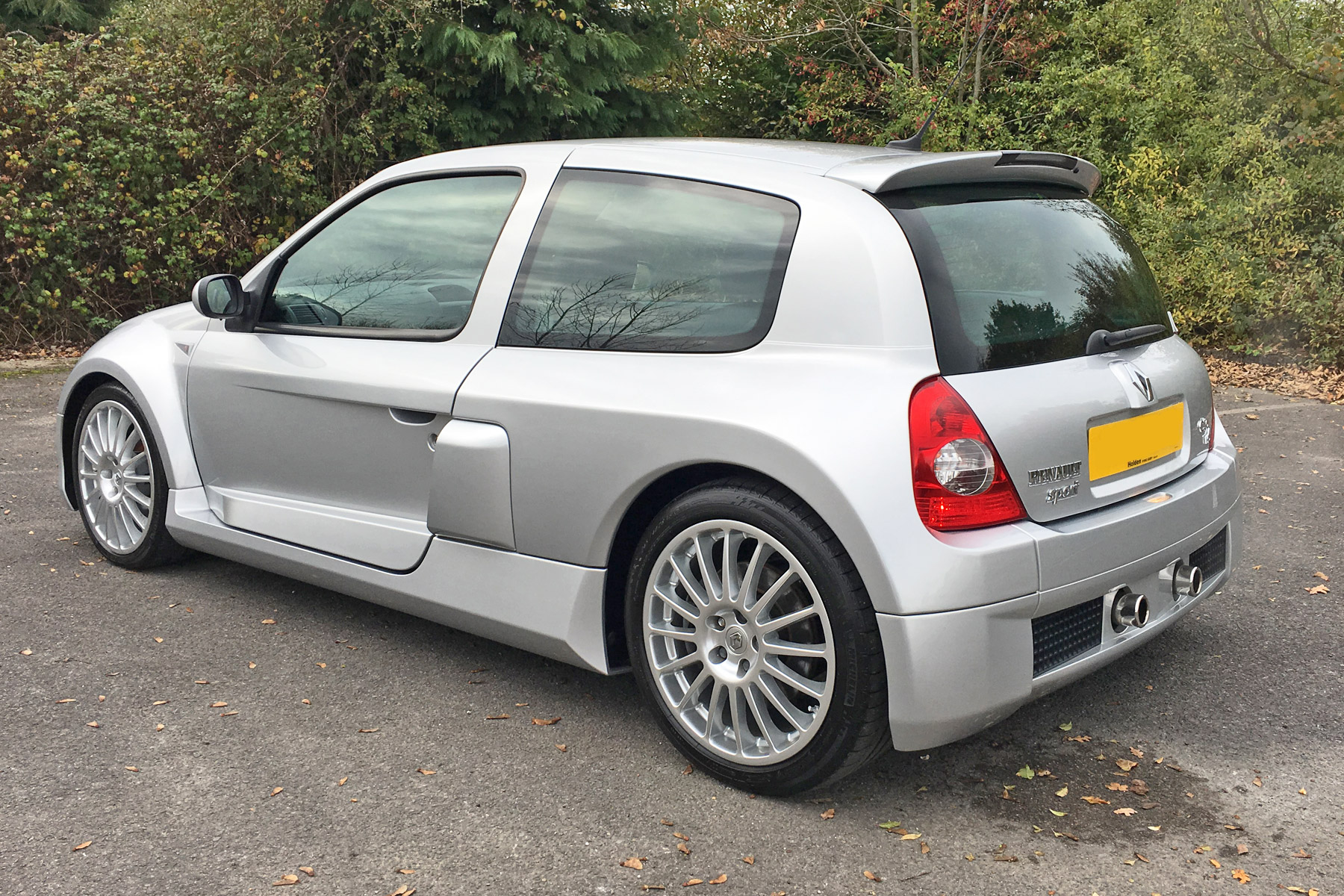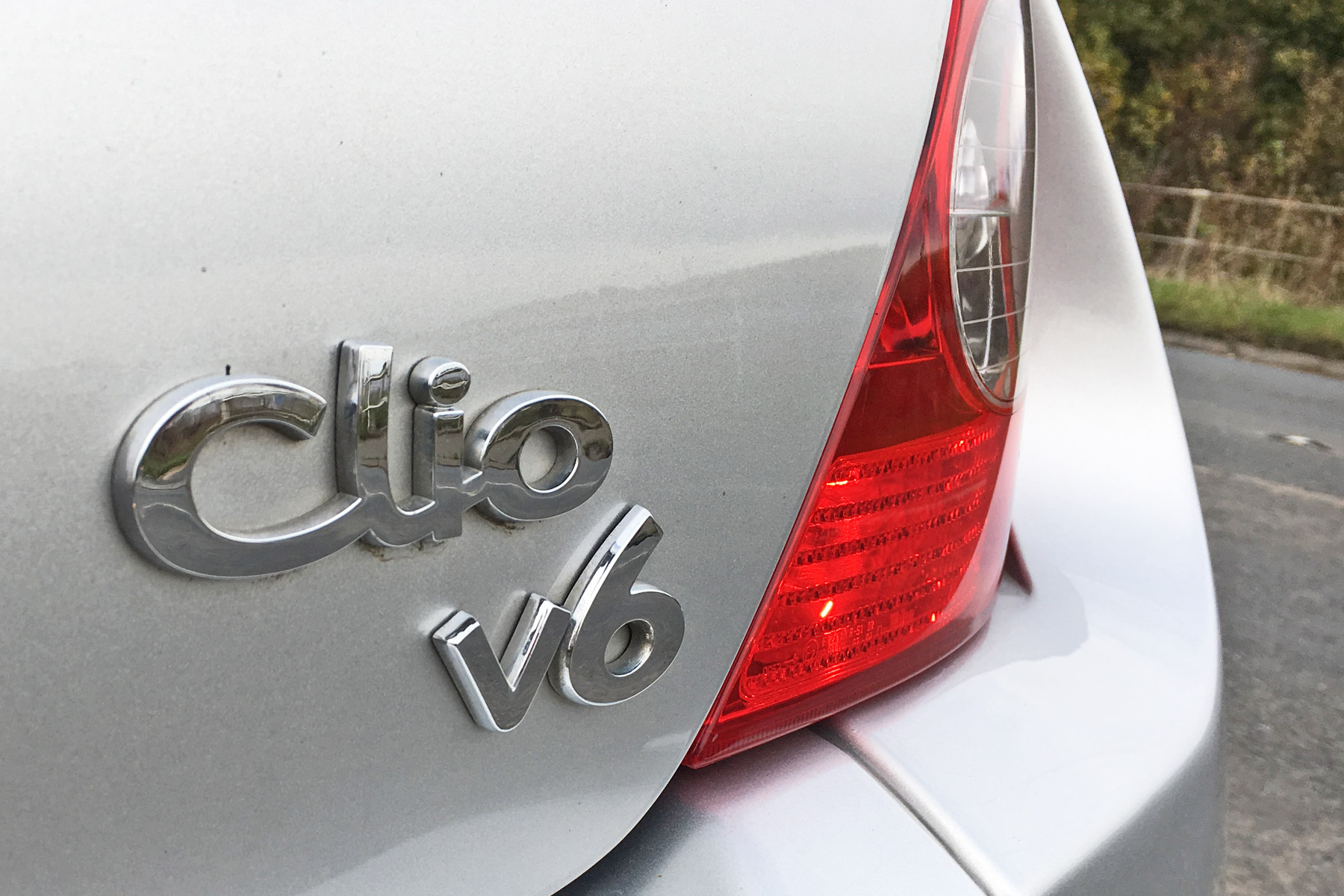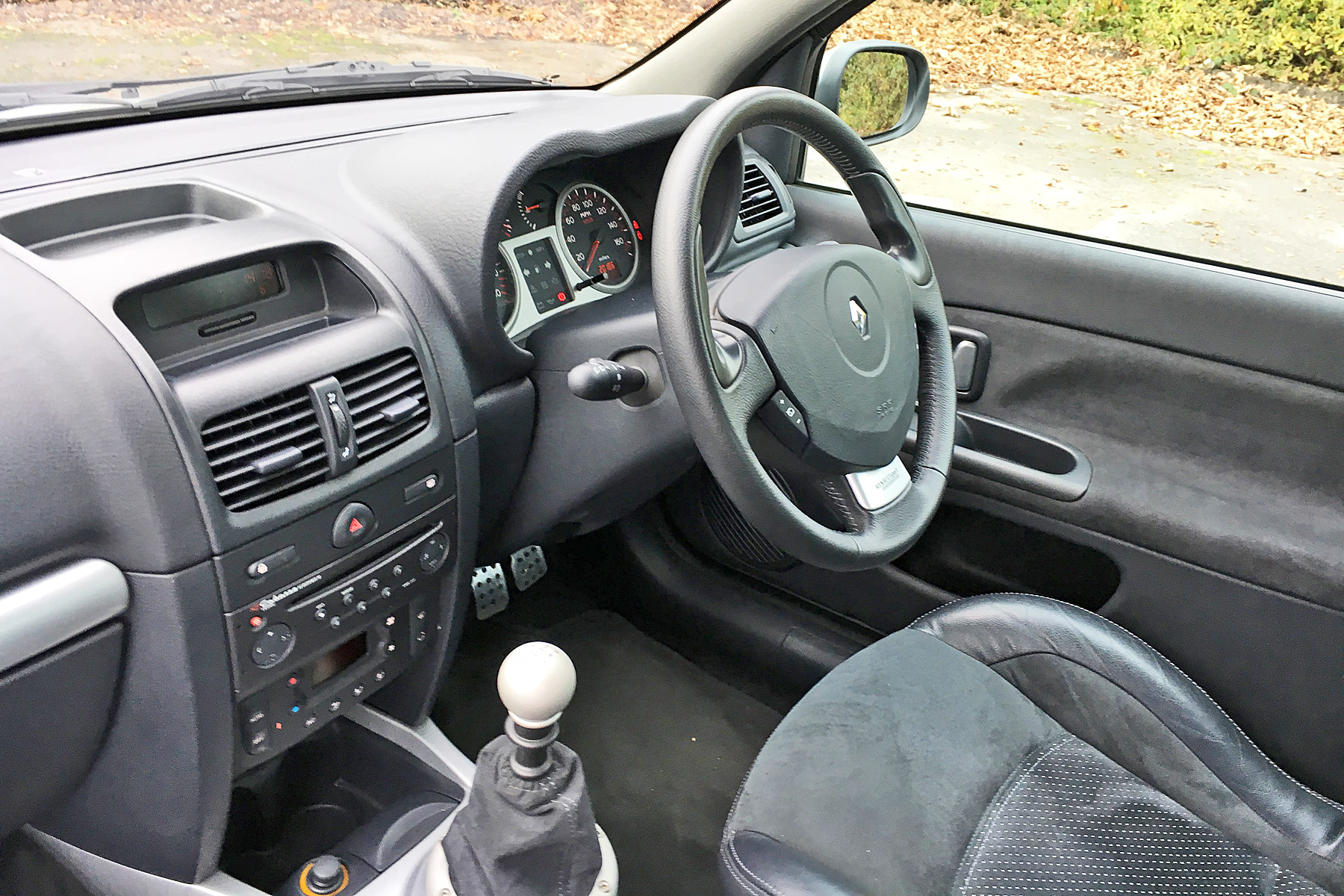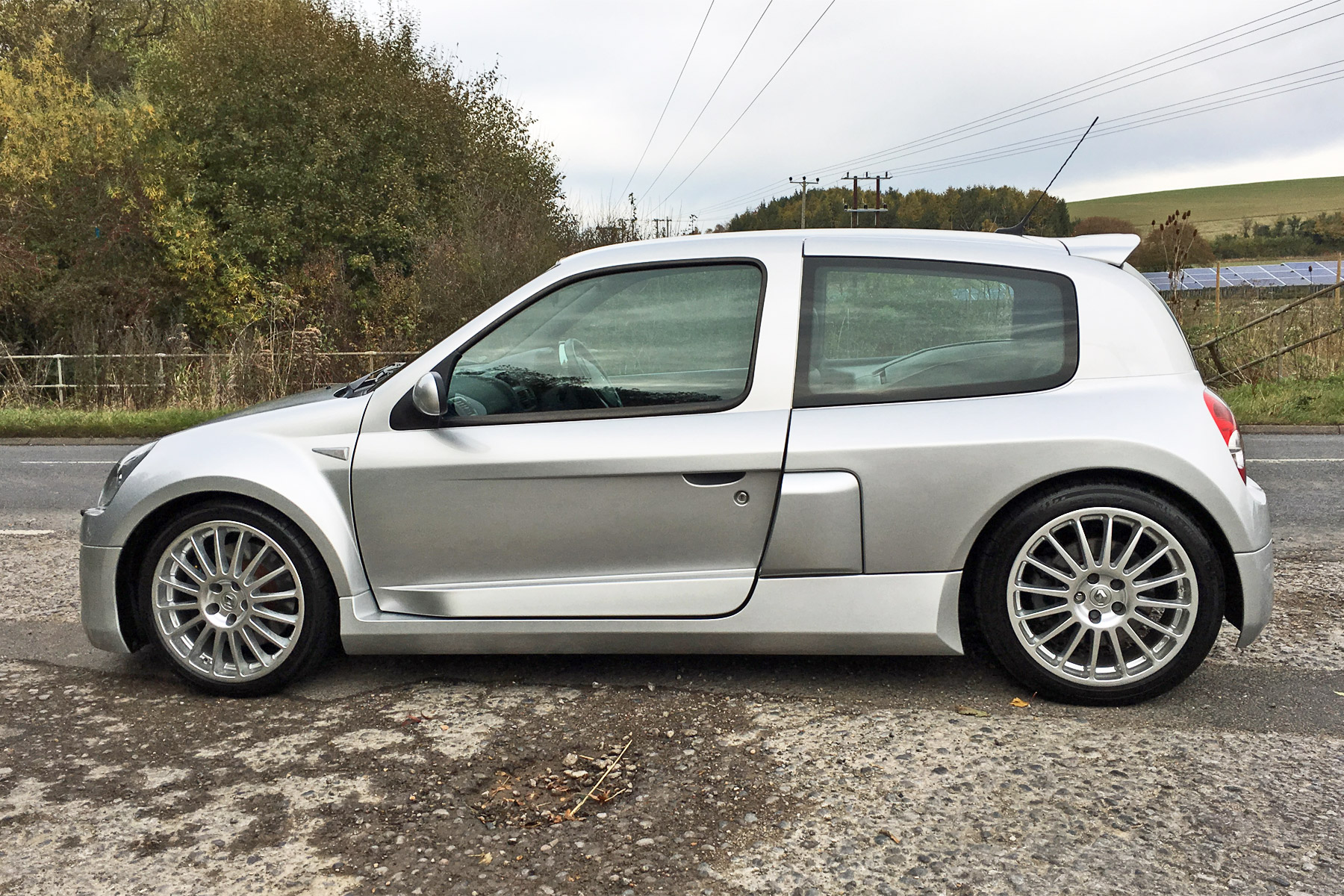This is what happened when Renault was going through one of its off-the-wall phases and decided to stick a V6 engine into the Clio supermini. It wouldn’t fit in the front, so the rear seats had to come out, with a 3.0-litre motor slotted into their place above the rear wheels.
The Clio V6 was described as a ‘classic’ even when it was new – with many astonished that this extreme hot hatchback even made it into production.
The first-generation car quickly developed a reputation for being snappy at the limit, while the phase two models (like that driven here) had some chassis tuning by Porsche and are considered more desirable.
What are its rivals?
The Clio V6 was the fastest hatchback money could buy when it was new. Potential buyers might also consider the Alfa Romeo 147 GTA or Seat Leon Cupra R, but neither were anywhere near as bonkers as this radical Renault.
In reality, the Clio was closer to a Porsche 911 in a supermini-shaped body than a traditional hot hatch.
What engine does it use?
The Clio V6 was launched at a time when various mainstream French cars were available with a 3.0-litre V6 petrol engine. It was already used in models such as the Renault Laguna, Vel Satis and even the Espace people carrier, not to mention the Peugeot 406 and Citroen Xantia.
By this phase two model, power had been boosted to 255hp, thanks to a revised cylinder head and better induction system.
What’s it like to drive?

First impressions: this feels like an early 2000s Renault Clio. The interior is drab and you sit far too high – but that’s par for the course when it comes to retro hot hatches. Start it up and the sound isn’t exactly thunderous, either.
It only starts to feel special when you put your foot on the clutch and select first gear. The clutch is Land Rover Defender-heavy, while the gearbox feels snickety in a way you don’t expect from a Clio.
Pull away and – huge turning circle aside – it all feels a bit, well, ordinary. There are creaks and rattles (and bear in mind this is a cared-for 20,000-mile example), while the steering seems surprisingly light and uncommunicative. You keep telling yourself that it’ll make up for it as soon as you reach a stretch of national speed limit road and open it up.
Does is get better? Well, sort of. It sounds good as you (steadily) rev towards its 7,500rpm redline, but the performance isn’t up to the standard of modern hot hatches. It will hit 62mph in 6.0 seconds – an astonishing figure back in the early noughties, but one that seems unremarkable now. The V6 feels lazy by today’s standards, too. It’s just not as frantic as you’d expect from its appearance.
At least, being mid-engined and rear-wheel drive, there’s none of the wayward torque steer we associate with hot hatches of this era. The Clio V6 feels like it has an abundance of traction, and later models don’t have the same reputation for being a handful that early ones did.
Unfortunately, the manic excitement promised by its looks doesn’t really arrive. Period reviews of the car suggest it takes a little time to get into the rhythm of the Clio V6 – and perhaps being spoilt by the instant gratification of modern hot hatches doesn’t help its cause. It didn’t leave us buzzing with exhilaration, though.
Reliability and running costs

The Clio V6 isn’t as unreliable as you might think, although finding a good specialist willing to work on it might be tricky. The position of the engine makes DIY maintenance difficult, and car insurance companies will be wary if you’re young or have a number of crashed hot hatches to your name.
You’ll also be lucky to achieve 20mpg and a tank will be emptied in less than 300 miles. So the Clio is definitely more of a B-road blaster than a car for crossing continents.
Could I drive it every day?

With prices as strong as they are (and rising), and less than 150 examples of this later 255hp model on UK roads, it’d be a shame to drive it every day. And why would you want to, frankly? The interior is pretty grim for spending a large chunk of your life in, and the novelty factor of driving a two-seat, mid-engined Clio every day would soon wear off.
If you want a sports car as a daily-driver, buy a Porsche Cayman. A Clio V6 is best kept for occasional use, including just to admire in your garage.
How much should I pay?
It won’t surprise you to learn that the Renault Clio V6 was only built in small numbers, so finding one will be your first challenge. When you do, reckon on a budget of between £50,000 and £60,000 for a tidy phase two car example like this one – around twice what the car cost when new.
Does that make the Clio V6 a good investment? Up to a point, it should be. But mixed reviews mean the car doesn’t have the exalted status of, say, a Peugeot 205 GTI.
What should I look out for?
Most obviously, signs of abuse and crash damage. Even the latest examples of the Clio V6 are 18 years old now, and in Renault hot hatch years that’s a lifetime. Especially if the car has been thrashed from cold, missed services and been chucked into the odd hedge sideways.
With the engine where it is, even checking the oil isn’t particularly easy, so some owners simply didn’t bother. Take it for a good test drive and feel whether the gears select easily; if not, there might be a synchromesh issue. Also, do the brakes stop the car in a straight line without any unpleasant noises?
Inspect the bodywork, as damage can be pricey to fix, and check the wheels carefully for signs of kerbing. Even the slightest nudge can knock out the car’s tracking.
Should I buy one?

A budget of £50,000 buys you a hot hatch like no other (apart from the original, mid-engined Renault 5 Turbo, perhaps). Alternatively, you could treat yourself to the brilliant new Honda Civic Type R, fresh out of the factory, and have a little left over. Or, on the secondhand market, how about Porsche Cayman or a BMW M2?
None of these cars have the novelty factor of an ageing French supermini from a time when Renault was crazy enough to shoehorn in a V6 engine. But how much do you want to be different? Only you can make that call.
Pub fact
Rumour has it, when the Clio V6 was being developed, Volkswagen heard that a 3.0-litre Clio was being produced. Refusing to be outdone in the efficiency stakes, or so it thought, the German comapny rushed the Lupo 3L into development – with the goal of consuming just three litres of fuel per 100km. The result was a very different car to the Clio V6…
Thanks to 4 Star Classics for the loan of the Renault Clio V6, which has now been sold.
ALSO READ:
1990 Renault 5 GT Turbo review: Retro Road Test


